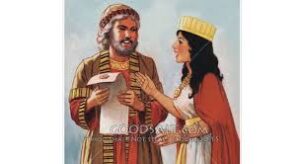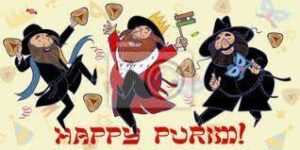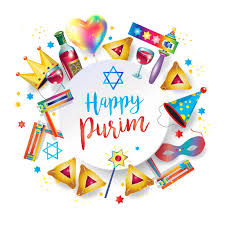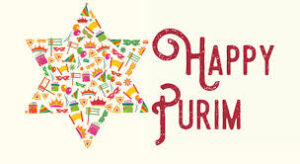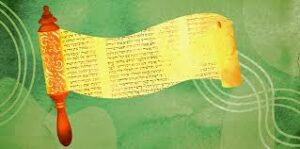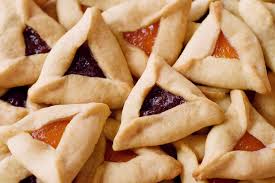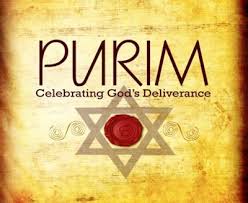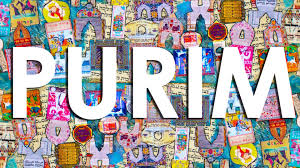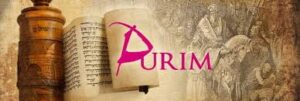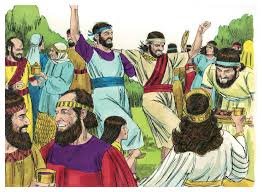Cg – End Notes
End Notes
The Book of Esther from a Jewish Perspective
1. Life Change Series: Ruth and Esther, NavPress, the Navigators, Colorado Springs, CO, 1987, pages 64-65.
2. The Bible Knowledge Commentary on the Old Testament, by John Walvoord and Roy Zuck, Victor Books, Wheaton, Illinois, 1986, pages 699-700.
3. Esther, the NIV Application Commentary, by Karen Jobes, Zondervan, Grand Rapids, Michigan, 1999, page 45.
The Place of Esther in the Canon of Scripture
4. Ezra, Nehemiah, and Esther, The New American Commentary, by Mervin Breneman, B&H Publishing Group, Nashville, Tennessee, 1993, pages 292-294.
Ancient Storytelling and the book of Esther
5. Ezra, Nehemiah and Esther, The New American Commentary, by Mervin Breneman, B&H Publishing Group, Nashville, Tennessee, 1993, page 286.
6. Esther, the NIV Application Commentary, by Karen Jobes, Zondervan, Grand Rapids, Michigan, 1999, pages 32-33.
The Theology of the book of Esther
7. Esther, the NIV Application Commentary, by Karen Jobes, Zondervan, Grand Rapids, Michigan, 1999, pages 41-43.
Esther Placed in a Position of Prominence
8. The Bible Knowledge Commentary on the Old Testament, by John Walvoord and Roy Zuck, Victor Books, Wheaton, Illinois, 1986, page 701.
Chapter 1
9. Esther, the NIV Application Commentary, by Karen Jobes, Zondervan, Grand Rapids, Michigan, 1999, page 62.
10. Ibid, pages 58-59.
11. Ezra, Nehemiah, and Esther, The New American Commentary, by Mervin Breneman, B&H Publishing Group, Nashville, Tennessee, 1993, page 306.
12. Life Change Series: Ruth and Esther, NavPress, the Navigators, Colorado Springs, CO, 1987, page 76.
13. Esther, the NIV Application Commentary, by Karen Jobes, Zondervan, Grand Rapids, Michigan, 1999, pages 66-67.
14. Ibid, pages 75-76.
15. Ibid, pages 69 and 75.16.
16. Ibid, pages 78-79.
17. The Name of God Concealed in the Book of Esther, by Dr. Ronald Youngblood, Bible Review 3 (Fall 1981): pages 6-7 Letter with response by Carey Moore.
Esther Elevated to Queen
18. Lost Women of the Bible, by Carolyn James, Zondervan Publishing House, Grand Rapids, Michigan, 2005, pages 142-143.
Chapter 2
19. Esther, the NIV Application Commentary, by Karen Jobes, Zondervan, Grand Rapids, Michigan, 1999, page 94.
20. Ezra, Nehemiah, and Esther, The New American Commentary, by Mervin Breneman, B&H Publishing Group, Nashville, Tennessee, 1993, page 314.
21. Esther, the NIV Application Commentary, by Karen Jobes, Zondervan, Grand Rapids, Michigan, 1999, page 36.
22. The Bible Knowledge Commentary on the Old Testament, by John Walvoord and Roy Zuck, Victor Books, Wheaton, Illinois, 1986, page 704.
23. Lost Women of the Bible, by Carolyn James, Zondervan Publishing House, Grand Rapids, Michigan, 2005, page 146.
24. Esther, the NIV Application Commentary, by Karen Jobes, Zondervan, Grand Rapids, Michigan, 1999, page 111.
25. Lost Women of the Bible, by Carolyn James, Zondervan Publishing House, Grand Rapids, Michigan, 2005, pages 148-149.
26. Esther, the NIV Application Commentary, by Karen Jobes, Zondervan, Grand Rapids, Michigan, 1999, pages 112-115.
27. Lost Women of the Bible, by Carolyn James, Zondervan Publishing House, Grand Rapids, Michigan, 2005, page 144.
28. Ezra, Nehemiah, and Esther, The New American Commentary, by Mervin Breneman, B&H Publishing Group, Nashville, Tennessee, 1993, page 319.
Haman Plots to Destroy the Jews
29. Ezra, Nehemiah, and Esther, The New American Commentary, by Mervin Breneman, B&H Publishing Group, Nashville, Tennessee, 1993, page 325.
30. Esther, the NIV Application Commentary, by Karen Jobes, Zondervan, Grand Rapids, Michigan, 1999, page 118.
31. Women of the Bible: God’s Word for the Biblically Inept, by Kathy Miller, Starburst Publishers, Lancaster, Pennsylvania, 1999, page 144.
32. Esther: Tyndale Old Testament Commentaries, by Joyce Baldwin, Inter-Varsity Press, Downers Grove, Illinois, 1984, pages 70-71.
33. Women of the Bible: God’s Word for the Biblically Inept, by Kathy Miller, Starburst Publishers, Lancaster, Pennsylvania, 1999, page 144.
34. Ezra, Nehemiah, and Esther, The New American Commentary, by Mervin Breneman, B&H Publishing Group, Nashville, Tennessee, 1993, page 323.
Chapter 3
35, Esther, the NIV Application Commentary, by Karen Jobes, Zondervan, Grand Rapids, Michigan, 1999, pages 119-120.
36. Esther: Tyndale Old Testament Commentaries, by Joyce Baldwin, Inter-Varsity Press, Downers Grove, Illinois, 1984, page 72.
37. Ezra, Nehemiah, and Esther, The New American Commentary, by Mervin Breneman, B&H Publishing Group, Nashville, Tennessee, 1993, page 327.
38. Esther, the NIV Application Commentary, by Karen Jobes, Zondervan, Grand Rapids, Michigan, 1999, page 121.
39. Ezra, Nehemiah, and Esther, The New American Commentary, by Mervin Breneman, B&H Publishing Group, Nashville, Tennessee, 1993, page 328.
40. Lost Women of the Bible, by Carolyn James, Zondervan Publishing House, Grand Rapids, Michigan, 2005, page 143.
41. Ezra, Nehemiah, and Esther, The New American Commentary, by Mervin Breneman, B&H Publishing Group, Nashville, Tennessee, 1993, page 328.
42. Esther, the NIV Application Commentary, by Karen Jobes, Zondervan, Grand Rapids, Michigan, 1999, page 122.43.
43. Ibid, page 122.
44. Life Change Series: Ruth and Esther, NavPress, the Navigators, Colorado Springs, CO, 1987, page 87.
45. Esther: Tyndale Old Testament Commentaries, by Joyce Baldwin, Inter-Varsity Press, Downers Grove, Illinois, 1984, page 74.
46. Second Corinthians, by John MacArthur, Moody Publishers, Chicago, Illinois, 2003, page 45.
47. Esther, the NIV Application Commentary, by Karen Jobes, Zondervan, Grand Rapids, Michigan, 1999, page 122.
48. Women of the Bible: God’s Word for the Biblically Inept, by Kathy Miller, Starburst Publishers, Lancaster, Pennsylvania, 1999, page 146.
49. The Bible Knowledge Commentary on the Old Testament, by John Walvoord and Roy Zuck, Victor Books, Wheaton, Illinois, 1986, page 706.
50. First Peter, by MacArthur, Chicago, Moody Publishers, 2004, pages 280-281.
51. Ibid, pages 280-284.
52. Ezra, Nehemiah, and Esther, The New American Commentary, by Mervin Breneman, B&H Publishing Group, Nashville, Tennessee, 1993, page 332.
Chapter 4
53. Esther: Tyndale Old Testament Commentaries, by Joyce Baldwin, Inter-Varsity Press, Downers Grove, Illinois, 1984, page 76.
54. Esther, the NIV Application Commentary, by Karen Jobes, Zondervan, Grand Rapids, Michigan, 1999, page 131.
55. Esther: Tyndale Old Testament Commentaries, by Joyce Baldwin, Inter-Varsity Press, Downers Grove, Illinois, 1984, page 77.
56. Esther, the NIV Application Commentary, by Karen Jobes, Zondervan, Grand Rapids, Michigan, 1999, page 136-137.
57. Ezra, Nehemiah, and Esther, The New American Commentary, by Mervin Breneman, B&H Publishing Group, Nashville, Tennessee, 1993, page 328.
58. Esther: Tyndale Old Testament Commentaries, by Joyce Baldwin, Inter-Varsity Press, Downers Grove, Illinois, 1984, page 78.
59. Lost Women of the Bible, by Carolyn James, Zondervan Publishing House, Grand Rapids, Michigan, 2005, page 150.
60. Esther: Tyndale Old Testament Commentaries, by Joyce Baldwin, Inter-Varsity Press, Downers Grove, Illinois, 1984, page 79.
61. Esther, the NIV Application Commentary, by Karen Jobes, Zondervan, Grand Rapids, Michigan, 1999, page 133-134.
62. Lost Women of the Bible, by Carolyn James, Zondervan Publishing House, Grand Rapids, Michigan, 2005, page 150-151.
Chapter 5
63. The Bible Knowledge Commentary on the Old Testament, by John Walvoord and Roy Zuck, Victor Books, Wheaton, Illinois, 1986, page 707.
64. Esther, the NIV Application Commentary, by Karen Jobes, Zondervan, Grand Rapids, Michigan, 1999, page 144.
65. Esther: Tyndale Old Testament Commentaries, by Joyce Baldwin, Inter-Varsity Press, Downers Grove, Illinois, 1984, page 85.
66. Ibid, pages 78-79.
67. Ezra, Nehemiah, and Esther, The New American Commentary, by Mervin Breneman, B&H Publishing Group, Nashville, Tennessee, 1993, page 329.
68. Esther, the NIV Application Commentary, by Karen Jobes, Zondervan, Grand Rapids, Michigan, 1999, page 147.
69. The Name of God Concealed in the Book of Esther, by Dr. Ronald Youngblood, Bible Review 3 (Fall 1981): pages 6-7 Letter with response by Carey Moore.
70. Lost Women of the Bible, by Carolyn James, Zondervan Publishing House, Grand Rapids, Michigan, 2005, page 153.
71. Esther: Tyndale Old Testament Commentaries, by Joyce Baldwin, Inter-Varsity Press, Downers Grove, Illinois, 1984, page 87.
72. The Name of God Concealed in the Book of Esther, by Dr. Ronald Youngblood, Bible Review 3 (Fall 1981): pages 6-7 Letter with response by Carey Moore.
73. Esther: Tyndale Old Testament Commentaries, by Joyce Baldwin, Inter-Varsity Press, Downers Grove, Illinois, 1984, page 88.
74. The Bible Knowledge Commentary on the Old Testament, by John Walvoord and Roy Zuck, Victor Books, Wheaton, Illinois, 1986, page 708.
Chapter 6
75. Esther: Tyndale Old Testament Commentaries, by Joyce Baldwin, Inter-Varsity Press, Downers Grove, Illinois, 1984, page 87.
76. Esther, the NIV Application Commentary, by Karen Jobes, Zondervan, Grand Rapids, Michigan, 1999, page 152.
77. Esther: Tyndale Old Testament Commentaries, by Joyce Baldwin, Inter-Varsity Press, Downers Grove, Illinois, 1984, page 90.
78. Ibid, page 91.
Chapter 7
79. Esther, the NIV Application Commentary, by Karen Jobes, Zondervan, Grand Rapids, Michigan, 1999, page 164.
80. Ezra, Nehemiah, Esther: The New Century Commentary, by D. J. Clines, Eerdmans, Grand Rapids, Michigan, 1984, page 311.
81. The Bible Knowledge Commentary on the Old Testament, by John Walvoord and Roy Zuck, Victor Books, Wheaton, Illinois, 1986, page 710.
82. The Name of God Concealed in the Book of Esther, by Dr. Ronald Youngblood, Bible Review 3 (Fall 1981): pages 6-7 Letter with response by Carey Moore.
83. Esther, the NIV Application Commentary, by Karen Jobes, Zondervan, Grand Rapids, Michigan, 1999, page 165.
84. The Expositor’s Bible Commentary, Volume 4, Frank Gaebelein, General Editor, Zondervan, Grand Rapids, Michigan, 1988, page 826.
85. Ezra, Nehemiah, and Esther, The New American Commentary, by Mervin Breneman, B&H Publishing Group, Nashville, Tennessee, 1993, page 350.
86. Esther, the NIV Application Commentary, by Karen Jobes, Zondervan, Grand Rapids, Michigan, 1999, page 172.
87. Ibid, page 173.
Chapter 8
88. Esther, the NIV Application Commentary, by Karen Jobes, Zondervan, Grand Rapids, Michigan, 1999, pages 176-177.
89. Ezra, Nehemiah, Esther: The New Century Commentary, by D. J. Clines, Eerdmans, Grand Rapids, Michigan, 1984, page 314.
90. Esther: Tyndale Old Testament Commentaries, by Joyce Baldwin, Inter-Varsity Press, Downers Grove, Illinois, 1984, page 94.
91. The Expositor’s Bible Commentary, Volume 4, Frank Gaebelein, General Editor, Zondervan, Grand Rapids, Michigan, 1988, page 829.
92. Esther: Tyndale Old Testament Commentaries, by Joyce Baldwin, Inter-Varsity Press, Downers Grove, Illinois, 1984, page 95.
93. Women of the Bible: God’s Word for the Biblically Inept, by Kathy Miller, Starburst Publishers, Lancaster, Pennsylvania, 1999, page 155.
94. Ezra, Nehemiah, Esther: The New Century Commentary, by D. J. Clines, Eerdmans, Grand Rapids, Michigan, 1984, page 316.
95. Purim: The Feast of Lots (Esther), by Arnold Fruchtenbaum, MBS177 A Messianic Bible Study from Ariel Ministries, San Antonio, Texas, 1980, page 16.
96. The Bible Knowledge Commentary on the Old Testament, by John Walvoord and Roy Zuck, Victor Books, Wheaton, Illinois, 1986, page 712.
97. Esther: Tyndale Old Testament Commentaries, by Joyce Baldwin, Inter-Varsity Press, Downers Grove, Illinois, 1984, page 99.
98. Ezra, Nehemiah, and Esther, The New American Commentary, by Mervin Breneman, B&H Publishing Group, Nashville, Tennessee, 1993, page 356.
99. The Bible Knowledge Commentary on the Old Testament, by John Walvoord and Roy Zuck, Victor Books, Wheaton, Illinois, 1986, page 712.
100. The Problem of War in the Old Testament, by Peter Craigie, Eerdmans, Grand Rapids, Michigan, 1978, pages 38-39.
101. Esther, the NIV Application Commentary, by Karen Jobes, Zondervan, Grand Rapids, Michigan, 1999, page 191.
Chapter 9
102. Ezra, Nehemiah, and Esther, The New American Commentary, by Mervin Breneman, B&H Publishing Group, Nashville, Tennessee, 1993, page 357.
103. Esther: Tyndale Old Testament Commentaries, by Joyce Baldwin, Inter-Varsity Press, Downers Grove, Illinois, 1984, page 103.
104. Esther, the NIV Application Commentary, by Karen Jobes, Zondervan, Grand Rapids, Michigan, 1999, pages 208-209.
105. Esther: Tyndale Old Testament Commentaries, by Joyce Baldwin, Inter-Varsity Press, Downers Grove, Illinois, 1984, page 105.
106. Esther, the NIV Application Commentary, by Karen Jobes, Zondervan, Grand Rapids, Michigan, 1999, pages 199 and 202.
107. Ibid, page 198.
108. Purim: The Feast of Lots (Esther), by Arnold Fruchtenbaum, MBS177 A Messianic Bible Study from Ariel Ministries, San Antonio, Texas, 1980, page 17.
109. Ezra, Nehemiah, and Esther, The New American Commentary, by Mervin Breneman, B&H Publishing Group, Nashville, Tennessee, 1993, page 283.
110. Answers to Tough Questions, by J. Carl Laney, Kregel Publications, Grand Rapids, Michigan, 1997, page 102.
111. Purim: The Feast of Lots (Esther), by Arnold Fruchtenbaum, MBS177 A Messianic Bible Study from Ariel Ministries, San Antonio, Texas, 1980, page 5.
The Feast of Purim
112. Esther, the NIV Application Commentary, by Karen Jobes, Zondervan, Grand Rapids, Michigan, 1999, pages 213-214.
113. Purim: The Feast of Lots (Esther), by Arnold Fruchtenbaum, MBS177 A Messianic Bible Study from Ariel Ministries, San Antonio, Texas, 1980, page 4.
114. Esther, the NIV Application Commentary, by Karen Jobes, Zondervan, Grand Rapids, Michigan, 1999, page 214.
115. Ezra, Nehemiah, Esther: The New Century Commentary, by D. J. Clines, Eerdmans, Grand Rapids, Michigan, 1984, page 326.
116. Purim: The Feast of Lots (Esther), by Arnold Fruchtenbaum, MBS177 A Messianic Bible Study from Ariel Ministries, San Antonio, Texas, 1980, pages 14-15.
117. Esther, the NIV Application Commentary, by Karen Jobes, Zondervan, Grand Rapids, Michigan, 1999, pages 216.
118. Ezra, Nehemiah, Esther: The New Century Commentary, by D. J. Clines, Eerdmans, Grand Rapids, Michigan, 1984, page 326.
119. Ibid, 326
120. Ezra, Nehemiah, and Esther, The New American Commentary, by Mervin Breneman, B&H Publishing Group, Nashville, Tennessee, 1993, page 365.
121. Esther, the NIV Application Commentary, by Karen Jobes, Zondervan, Grand Rapids, Michigan, 1999, pages 214-216.
122. Siddur for Messianic Jews, by Dr. John Fischer, Menorah Ministries, Palm Harbor, Florida, Page 79.
123. Ezra, Nehemiah, and Esther, The New American Commentary, by Mervin Breneman, B&H Publishing Group, Nashville, Tennessee, 1993, page 366.
124. Esther, the NIV Application Commentary, by Karen Jobes, Zondervan, Grand Rapids, Michigan, 1999, pages 222-223.
125. Esther: Commentary on the Old Testament, Volume III, by Frederick Keil, Eerdmans Publishing Company, Grand Rapids, Michigan, 1980, page 378.
126. Esther: Tyndale Old Testament Commentaries, by Joyce Baldwin, Inter-Varsity Press, Downers Grove, Illinois, 1984, page 111.
127. Esther, the NIV Application Commentary, by Karen Jobes, Zondervan, Grand Rapids, Michigan, 1999, page 224.
128. Purim: The Feast of Lots (Esther), by Arnold Fruchtenbaum, MBS177 A Messianic Bible Study from Ariel Ministries, San Antonio, Texas, 1980, pages 10-11.
129. Ibid, pages 11-13.
130. Ibid, pages 13-14.
131. Ibid, page 14.
132. Ibid, page 15.
133. Ibid, pages 15-16.
134. Ibid, page 16.
135. Ibid, page 16.
136. Ibid, page 9.
137. Christian Theology. Grand Rapids, by Millard Erickson, Baker Book House, Grand Rapids, Michigan, 1985, page 389.
138. Purim: The Feast of Lots (Esther), by Arnold Fruchtenbaum, MBS177 A Messianic Bible Study from Ariel Ministries, San Antonio, Texas, 1980, page 10.
Chapter 10
139. Ezra, Nehemiah, and Esther, The New American Commentary, by Mervin Breneman, B&H Publishing Group, Nashville, Tennessee, 1993, page 369.
140. Esther: Tyndale Old Testament Commentaries, by Joyce Baldwin, Inter-Varsity Press, Downers Grove, Illinois, 1984, page 115.
141. Ezra, Nehemiah, and Esther, The New American Commentary, by Mervin Breneman, B&H Publishing Group, Nashville, Tennessee, 1993, page 281.
142. Esther, the NIV Application Commentary, by Karen Jobes, Zondervan, Grand Rapids, Michigan, 1999, page 224.



